Modern vs. Classic Kitchen Design: Which Style Suits Your Home Best?
The kitchen is often described as the heart of the home, a space where meals are prepared, families gather, and memories are made. As such, its design plays a crucial role in reflecting your personal style and enhancing daily living. When embarking on a kitchen renovation or designing a new home, one of the most significant decisions you’ll face is choosing between a modern and a classic kitchen aesthetic. Each style offers distinct advantages, features, and overall ambiance, making the choice deeply personal.
While some might instinctively categorize classic as “old” and modern as “new,” the distinction goes far beyond mere age. It encompasses a philosophy of design, an approach to functionality, and a preference for specific materials and finishes. Both styles have evolved over time, incorporating contemporary conveniences while staying true to their core principles. This comprehensive guide will demystify the characteristics of modern and classic kitchens, helping you understand their nuances and determine which design truly aligns with your vision and lifestyle.
Let’s dive deeper into the defining elements of each style and explore their key differences, dispelling any misconceptions you might have along the way.
What is Modern Kitchen Design?
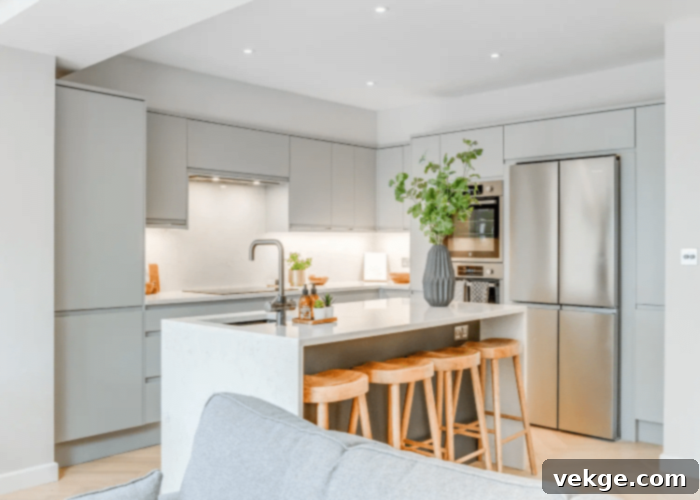
Modern kitchen design embodies a philosophy of minimalism, functionality, and sleek aesthetics. It’s characterized by clean lines, geometric shapes, and an uncluttered appearance. The focus is on creating a streamlined, efficient workspace that integrates seamlessly with contemporary living spaces, often featuring open-plan layouts. Everything in a modern kitchen is designed with purpose, aiming for a visual simplicity that belies its advanced functionality.
Key features of modern kitchens include state-of-the-art built-in appliances that are often hidden behind cabinet panels or integrated flush with cabinetry, contributing to the seamless look. Storage solutions are meticulously planned, offering a plethora of clever options like pull-out pantry racks, deep drawers with organizational inserts, and corner solutions that maximize every inch of space. The emphasis is on ease of use and accessibility without compromising on aesthetics.
Materials commonly found in modern kitchens include high-gloss or matte laminates, lacquered finishes, stainless steel, glass, and engineered stones like quartz. These materials are chosen for their durability, easy maintenance, and ability to create a polished, contemporary look. Color palettes typically lean towards neutrals such as whites, grays, and blacks, often accented with bold pops of color or contrasting textures to add visual interest. Handleless cabinets, achieved with integrated pulls or push-to-open mechanisms, are a hallmark of modern design, further enhancing the smooth, uninterrupted surfaces.
What is a Classic Kitchen Design?
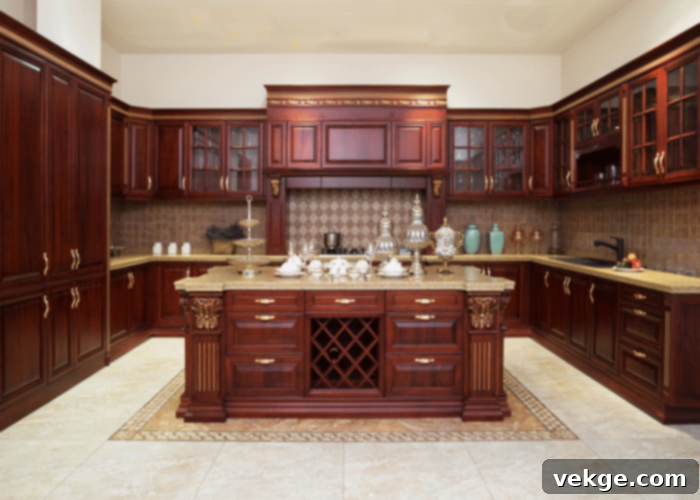
In stark contrast to the sleek lines of modern design, classic kitchen design embraces warmth, tradition, and a sense of enduring charm. It draws inspiration from historical styles, evoking a cozy, inviting, and often elegant atmosphere reminiscent of a time-honored home. While not “old-fashioned,” classic kitchens possess a timeless quality that transcends fleeting trends, focusing on comfort and a welcoming feel.
The aesthetic of a classic kitchen is deeply rooted in natural materials and craftsmanship. You’ll frequently find rich, solid woods like oak, cherry, and maple, often with intricate detailing or distressed finishes. Natural stone countertops such as granite or marble, along with ceramic or porcelain tiles, contribute to the authentic and durable character. The color palette tends to favor warmer tones, including creams, ivories, earthy greens, soft blues, and various shades of white, which enhance the natural beauty of the materials.
Cabinetry in classic kitchens often features raised-panel doors, Shaker styles, or beaded inset designs, frequently adorned with decorative hardware like elegant knobs and pulls. Open shelving is also common, providing opportunities to display cherished dishes, cookbooks, or decorative accents, further personalizing the space. Appliances, while modern in function, might be chosen for their classic appearance or integrated with custom panels to maintain the cohesive traditional look. One of the significant advantages of classic designs is their remarkable durability; well-maintained classic kitchens can withstand the test of time, often lasting for generations, unlike modern designs that might feel dated with every passing technological advancement.
Modern Kitchen vs. Classic Kitchen: A Detailed Comparison
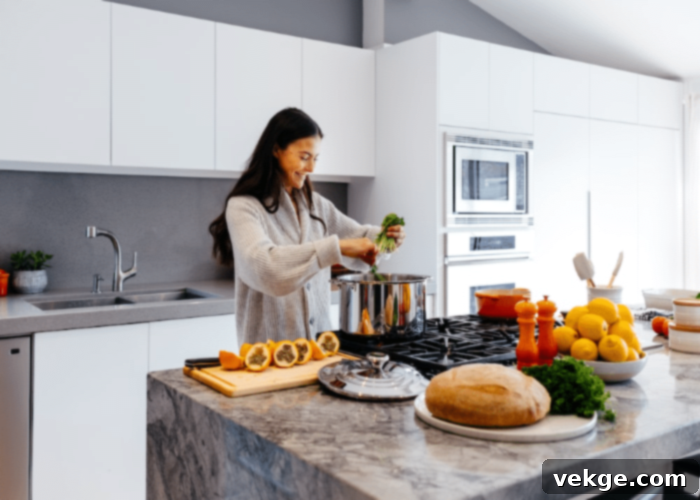
Both modern and classic kitchen designs offer compelling visions for your home’s culinary hub. They are not merely different; they represent divergent philosophies of aesthetics and functionality. The “better” choice is entirely subjective, hinging on your personal taste, the architectural style of your home, and your daily lifestyle needs. If you’re drawn to the warmth, tradition, and rich textures of natural elements, a classic kitchen might be your ideal. Conversely, if you appreciate sleek efficiency, cutting-edge technology, and a minimalist aesthetic, a modern kitchen will likely capture your heart. Either way, investing in a well-designed kitchen will enhance your home’s value and bring you immense satisfaction.
To help you make an informed decision, let’s explore the distinct differences across several key design elements:
1. Shape and Geometry
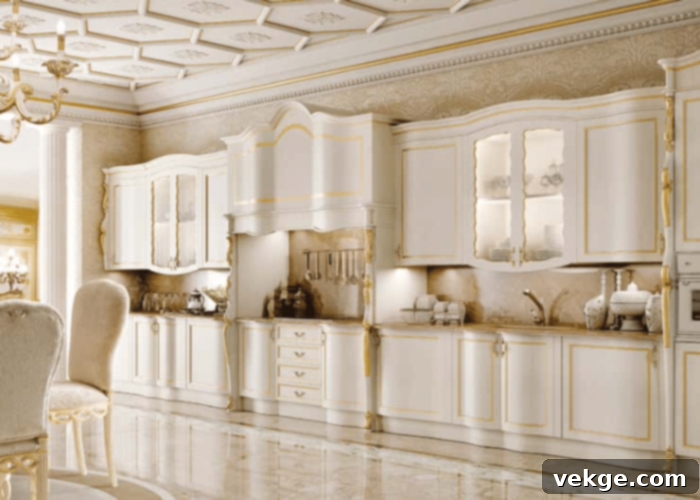
The fundamental geometry of a kitchen is one of the most immediate visual differentiators. Classic kitchens frequently incorporate softer, more organic shapes, often featuring rounded edges, arched details, and decorative moldings. These elements contribute to a softer, more inviting aesthetic and can create a sense of fluid movement and comfortable passage within the space. The emphasis is on gentle curves and intricate details that exude traditional elegance.
In contrast, modern kitchens are defined by their crisp, precise lines, sharp angles, and strong geometric forms. You’ll find straight edges on countertops, flat-panel cabinet doors, and often a preference for rectangular or square islands. This bold, clean-cut approach creates a highly organized, uncluttered look that is both visually striking and inherently functional. These sharp lines contribute to the perception of spaciousness and order, making them a definite treat for the eyes seeking contemporary sophistication.
2. Appliances and Integration

The role and visibility of appliances vary significantly between the two styles. Modern kitchens strongly emphasize seamless integration. Appliances are often built-in, concealed behind custom panels, or designed to blend effortlessly with the cabinetry. This approach not only creates a clean and tidy aesthetic but also maximizes precious counter space and working areas. Modern appliances frequently boast smart technology, energy efficiency, and touch controls, reflecting the desire for convenience and cutting-edge functionality in a compact, easy-to-maintain package.
Classic kitchens, while not shunning modern conveniences, often feature more prominent, free-standing appliances. A grand range cooker might serve as a focal point, or a retro-inspired refrigerator could add character. While some appliances might be paneled, there’s generally less emphasis on completely hiding them. The charm of classic design often comes from visible, perhaps even antique-looking, fixtures and fittings that contribute to the overall traditional ambiance.
3. Cabinetry Style and Storage Solutions
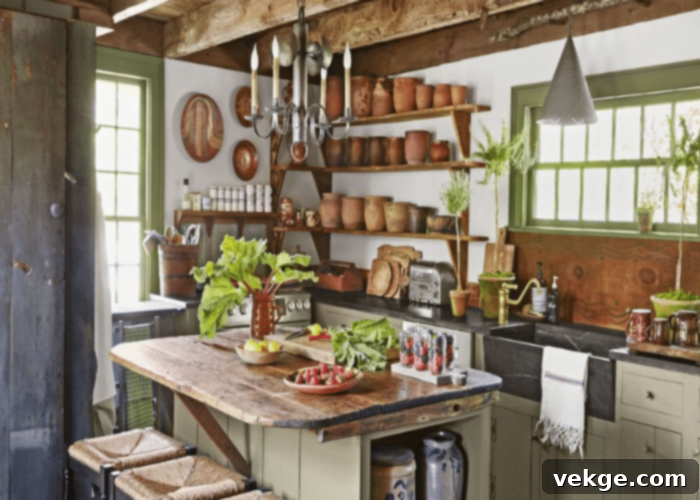
Cabinetry is a cornerstone of any kitchen design, and its execution differs markedly between classic and modern styles. Classic kitchens typically showcase intricate detailing, such as raised-panel, recessed-panel (Shaker), or beaded inset doors. Decorative crown molding, corbels, and fluted columns are often incorporated to add a sense of traditional craftsmanship and architectural interest. Open shelving or glass-front cabinets are common, allowing homeowners to display decorative items, creating a more personalized and ‘lived-in’ feel that can accommodate a larger gathering of people comfortably.
Modern kitchen cabinetry, conversely, is defined by its clean, unadorned surfaces. Flat-panel or slab doors are prevalent, often featuring handleless designs for an uninterrupted facade. Finishes tend to be smooth, ranging from high-gloss laminates to matte lacquers. Storage solutions are hyper-efficient and discreet, with features like internal drawer organizers, hidden pantries, lift-up doors, and intelligent corner units. The goal is to maximize storage capacity while maintaining a sleek, minimalist appearance, perfect for optimizing space even in smaller kitchen footprints.
4. Materials and Textures
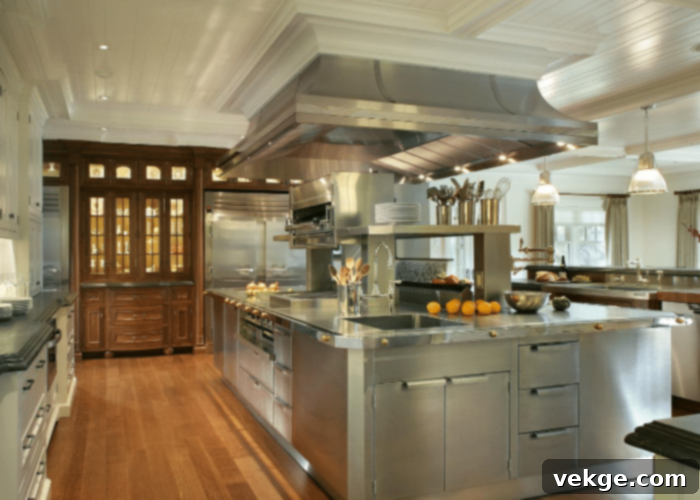
The materials chosen for each style greatly influence the overall vibe and longevity. Classic kitchens celebrate the richness and warmth of natural materials. Solid hardwoods like oak, maple, and cherry are mainstays for cabinetry, often stained or painted to showcase their natural grain. Countertops frequently feature natural stone such as granite or marble, known for their unique patterns and exceptional durability. Ceramic or terracotta tiles, and even brick, can be used for flooring and backsplashes, connecting the kitchen to a rustic or traditional heritage. This emphasis on natural elements creates a homely vibration and a sophisticated, long-lasting aesthetic.
Modern kitchens, on the other hand, embrace a broader spectrum of materials, often incorporating man-made or engineered options alongside natural ones. Stainless steel is ubiquitous, found in appliances, sinks, and even countertops for an industrial-chic touch. Glass, plastic, and highly polished lacquers are used for cabinet fronts and backsplashes. Engineered stones like quartz are popular for countertops due to their uniformity, durability, and low maintenance. The selection of materials in a modern kitchen is driven by the desire for a fresh, clean, and up-to-date look, making it responsive to current trends in design and technology.
5. Color Palette and Patterns
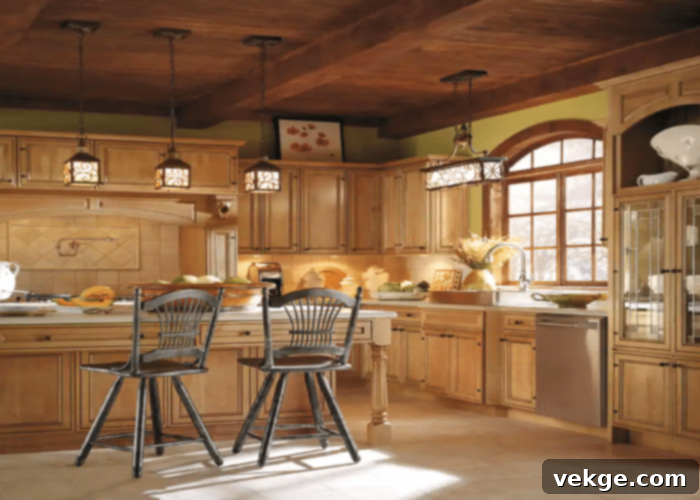
The choice of colors and patterns fundamentally dictates the mood of a kitchen. Classic kitchens typically favor a soft, warm, and inviting color scheme. Earthy tones, such as creamy whites, muted greens, gentle blues, and various shades of brown (especially from natural wood finishes), are prominent. Floral patterns, intricate tile designs, and subtle textures often feature in backsplashes, wallpapers, or upholstery, adding to the traditional charm and creating a visually rich environment that feels connected to nature.
Modern kitchens, conversely, embrace a bolder, more minimalist approach to color. Neutral palettes of stark whites, cool grays, and deep blacks are common, often used in monochromatic schemes or with high-contrast combinations. When color is introduced, it tends to be in vibrant, saturated hues used as accent elements rather than dominant themes. Patterns are typically subtle, geometric, or textural rather than ornate, contributing to the clean and uncluttered aesthetic. The overall theme is to create a fresh, neat, and highly sophisticated look with minimal visual distractions, allowing the functional elements to shine.
Making Your Decision: Modern or Classic?
Deciding on a kitchen style is a pivotal step in any home renovation project. The “oscillation” between modern and classic kitchen designs is a common dilemma, as both are inherently successful and possess unique appeal. By dissecting their core characteristics—from shape and appliances to cabinetry, materials, and color palettes—you now have a clearer understanding of what each style offers and which might resonate more with your personal taste and desired home ambiance.
Beyond personal preference, practical considerations should also guide your decision. Evaluate the size of your kitchen space: a classic design, with its often more ornate details and freestanding elements, might require a larger area to truly flourish and accommodate gatherings. A modern kitchen, with its emphasis on sleek lines and integrated features, can be incredibly efficient and spacious even in more compact settings. Think about your lifestyle: do you value cutting-edge technology and a streamlined, easy-to-clean environment? Or do you prefer the warmth, character, and enduring quality of traditional craftsmanship?
Ultimately, a kitchen remodel is an exciting journey of transformation. Once you are clear on your theme and design direction, the process can be incredibly rewarding and fun-filled. Choose wisely, considering both the aesthetic appeal and the long-term functionality for your family’s needs. Share this article with your partner or family to ensure everyone is on the same page and fully onboard with creating the perfect kitchen for your home.
